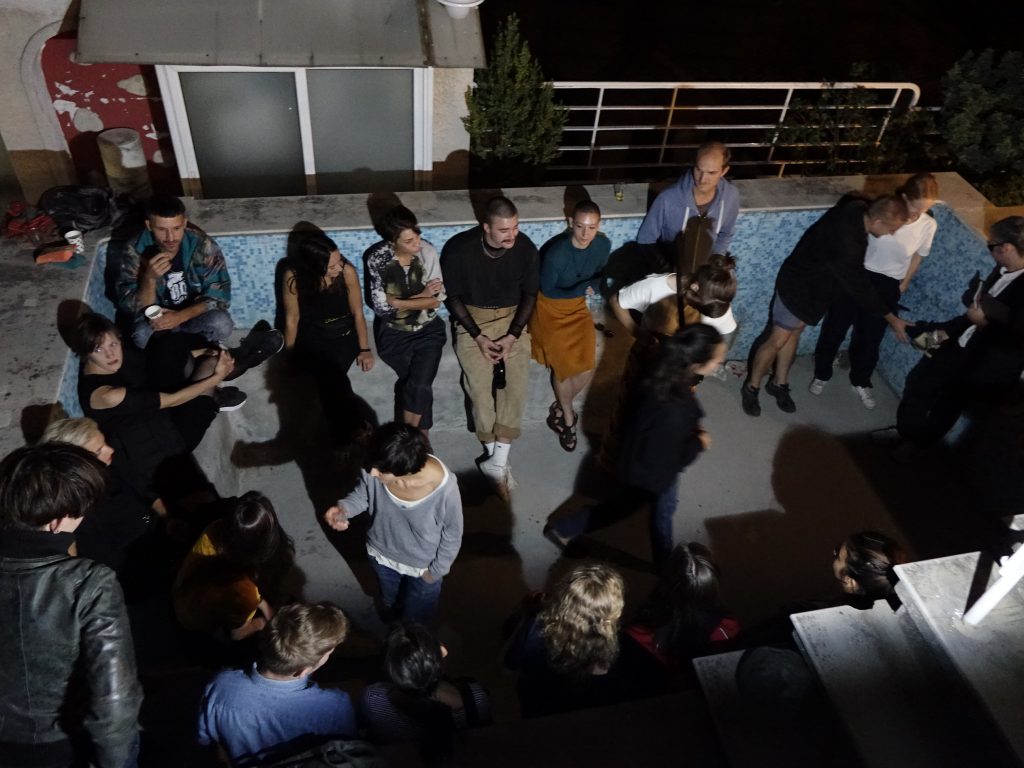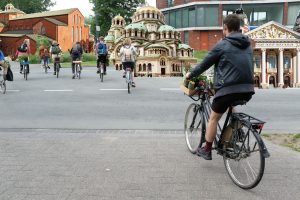Feature
SONIC EGGS MFA class of 2019 and Jan Verwoert
In mid-September 2018, ten artists from the Master Fine Art at the Piet Zwart Institute in Rotterdam went to Sofia, Bulgaria for a residency at Swimming Pool Art Center in the context of their first year “Self-Organized Project,” sponsored by the PZI MFA. They presented their work to the public in Sofia, and then followed up in November with an exhibition and performance program at Wolfart Project Space in Rotterdam.
Like Really
Jan Verwoert, 2019
It’s not like good things only happen for a reason. Some simply need the occasion. Honour the accidents that put gifts in your hands. They’re breakable, beware! Eggs in a pool. Assets in a nest. Sounds in your head you might not forget. Taking a trip can do this to you. A few days in a new city are hardly enough to know it. But, pressed for time, you may stumble across things and bump into people, or hear the best tunes in town at the last place open late. In this spirit pieces get made. They grow when, after some rest; you take them out again for a night.
Is this realism? There is no other name to call it. You’re among people, amidst things. This is not because you took a major decision to step out into the world. Where else would you find yourselves, but in it? The tricky bit lies in figuring out how much of the world to let in, on which frequency to receive it, how much to filter away… and, once stuff has entered your system, how much to control what it does to you, where it pulls you, and what it pushes you away from…? All of this is really happening. Not in a black box, from which to pull a bunny, like from a top hat, tada, surprise, it’s art! No, the rabbit is out there, alert, and on the move, listening, following scents, leaving traces.
Sure, cute image—but why is it that what comes out looks weird? Why is it not just maps and street views like on Google Earth? It’s because the map is not the city. Besides, going around with a Google camera mushroom strapped to one’s back already is a pretty weird thing to do, and see; don’t you think? It’s not like the true realist could ever escape the fate of becoming a surrealist, at least in the eyes of others. Most creatures look funny, strange, or scary when they fully focus, like when some noise makes your dog’s every muscle tense up. All senses go online, and you just want to calm it: “Relax, it’s only the postman.” What if it’s not?
Seriously, so many pockets of reality only open up when you entertain the possibility of things being different from what you thought. Getting attuned then means being ready to go surreal and allowing for reality to pull you in its undertow, slipping in between its layers, reading between lines. Buffer the memories, let pictures soak, spin yarn, twist thoughts, invert, revert, pervert the input till the output gets the same density as the world around you. Blue whales have seven stomachs, humans have art and words. For real, how surreal is that!
Upon the invitation of Swimming Pool Gallery, ten artists from the Piet Zwart Institute in Rotterdam went to Sofia and did a show in the nick of time. In one night at Wolfart, they remade work in the light of this new occasion.
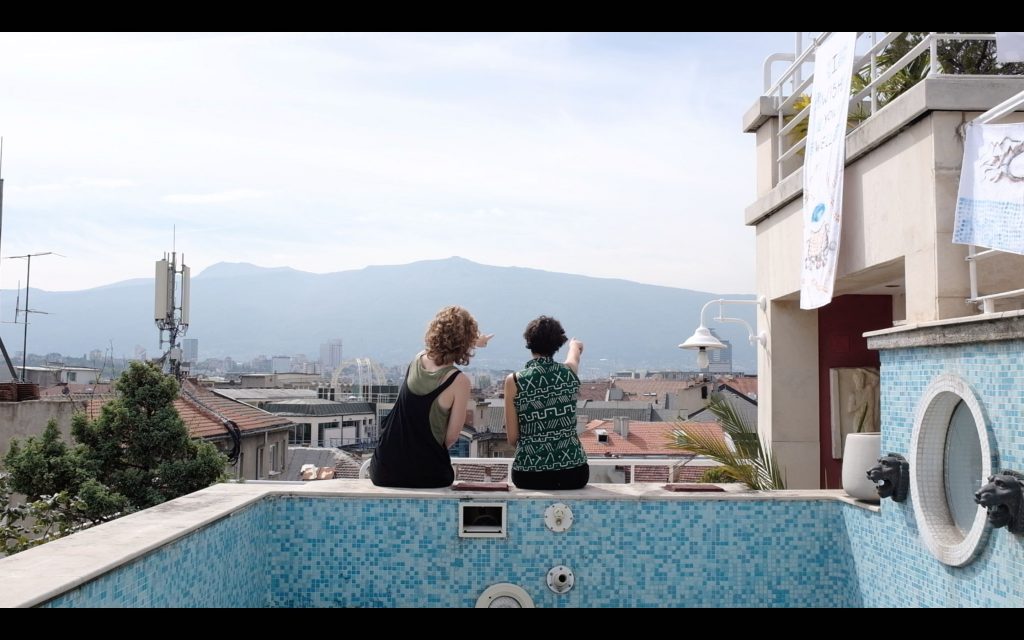
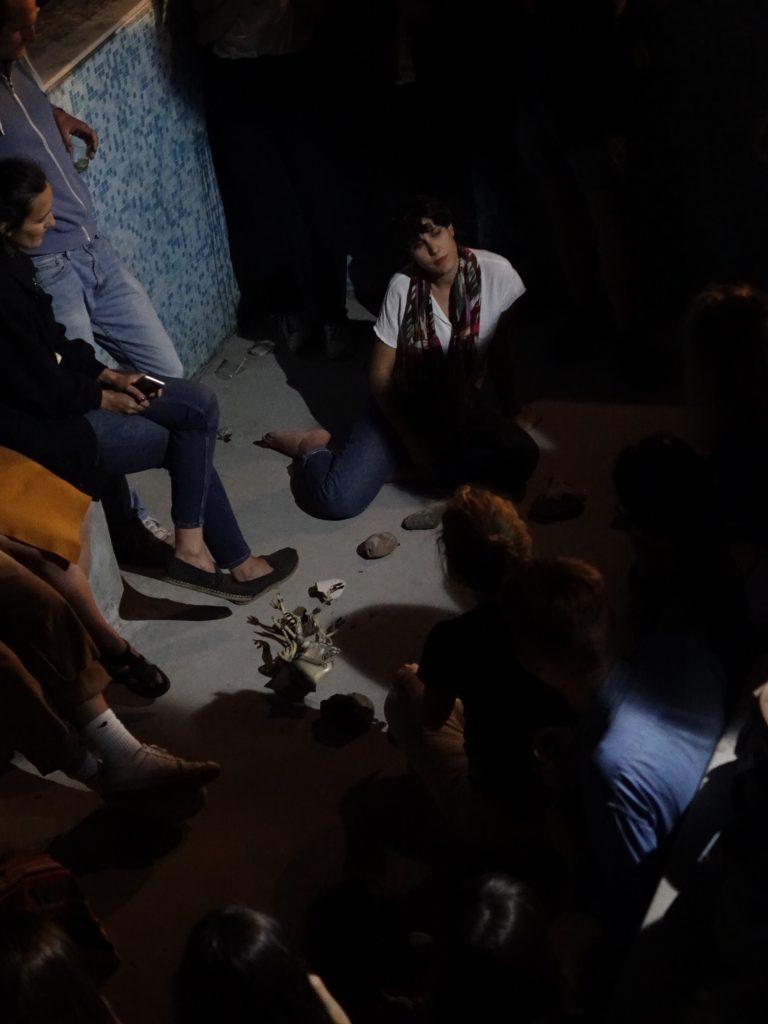
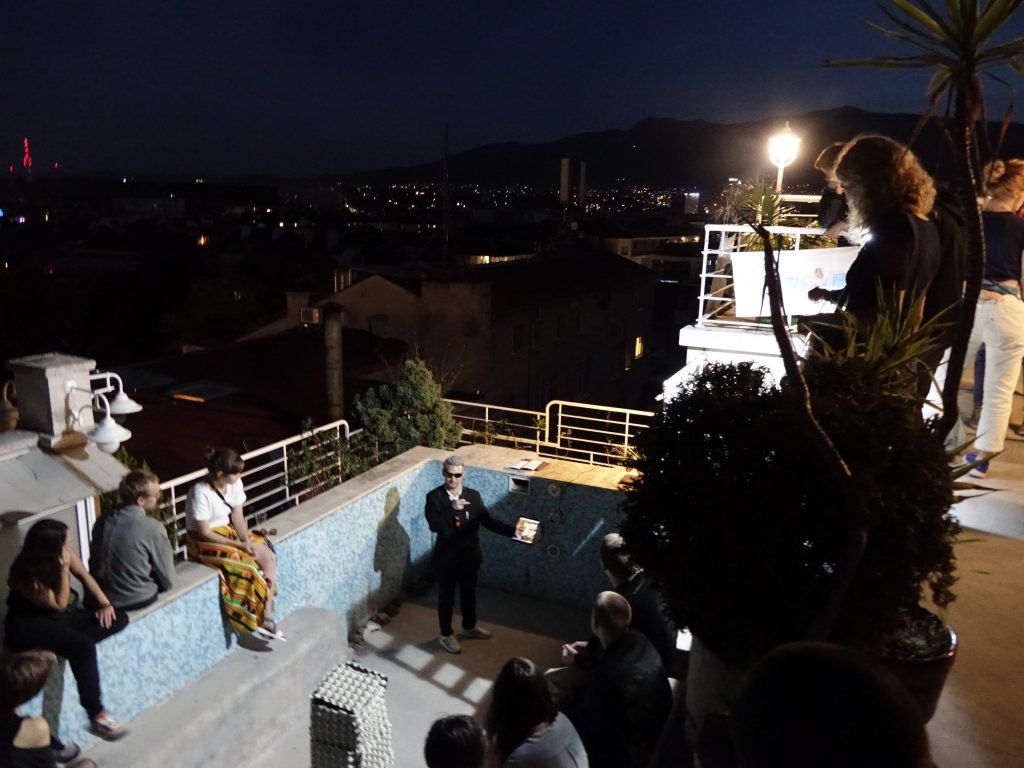
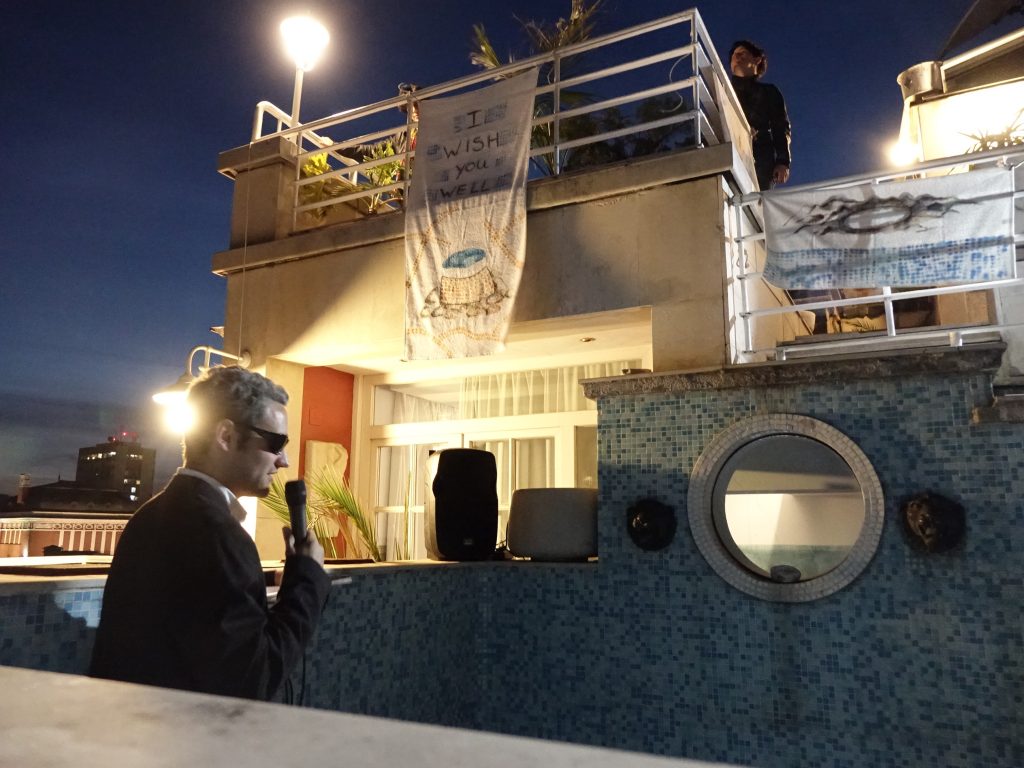
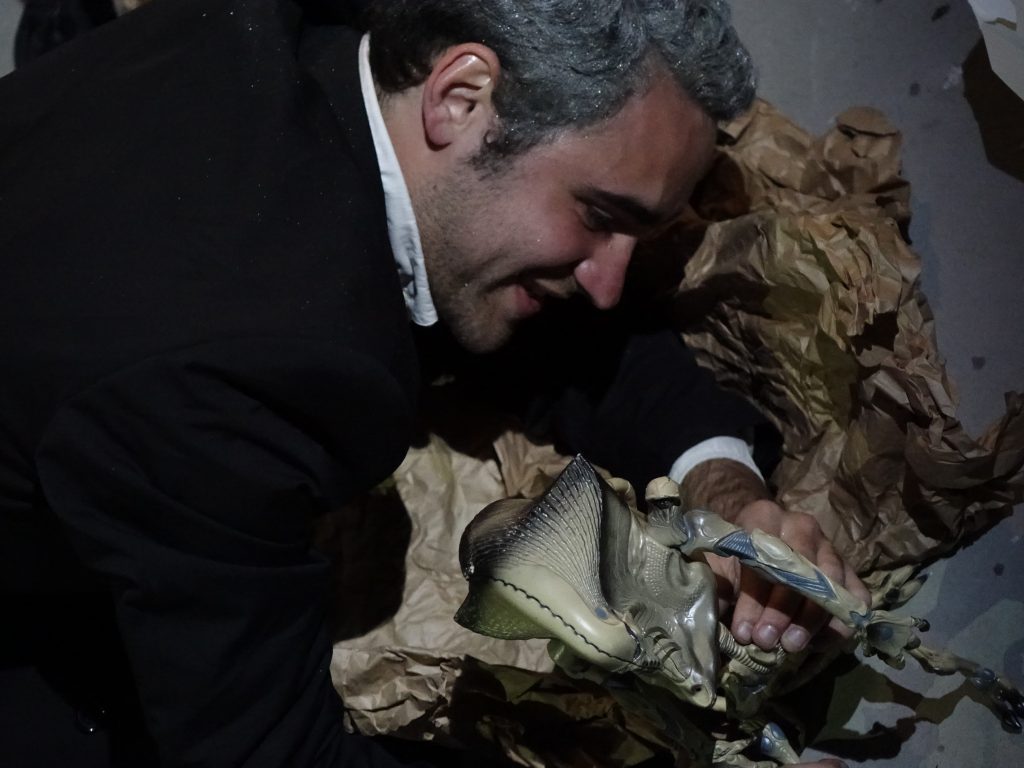
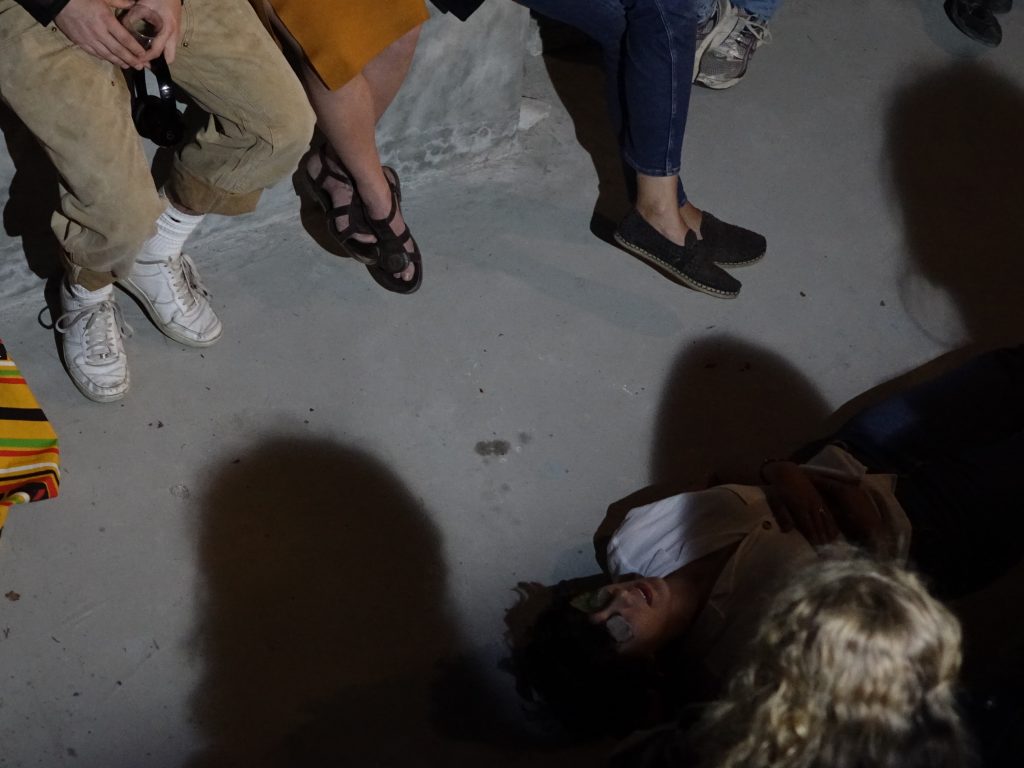
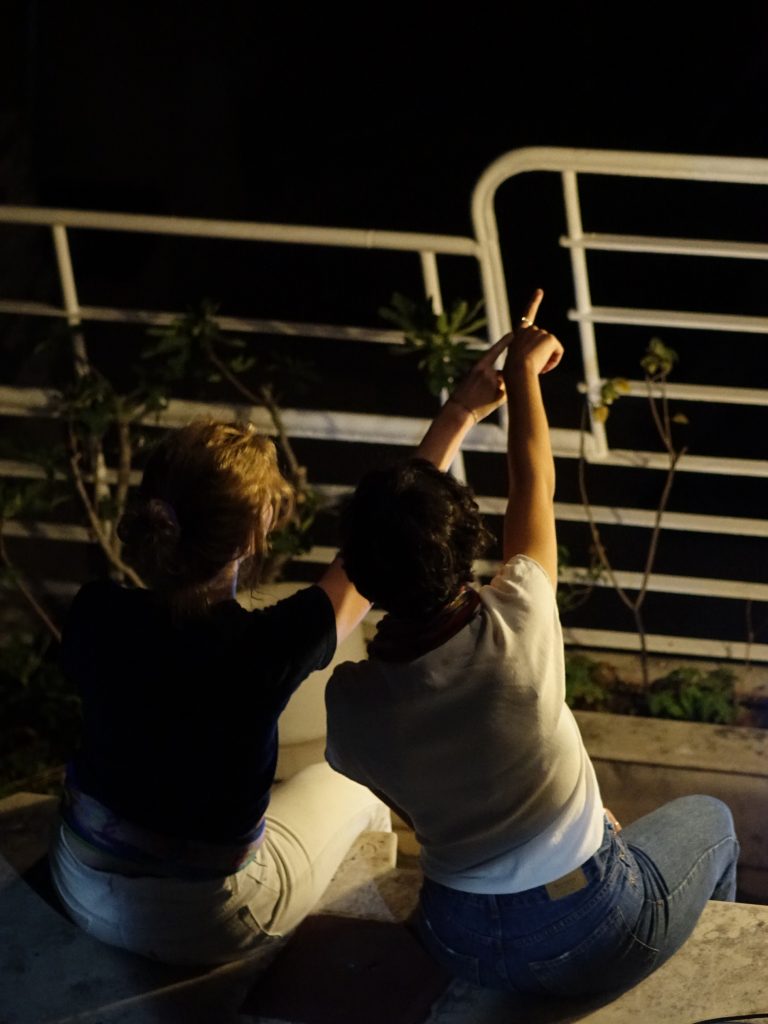
Conversation Over Dinner in Merve’s Kitchen: November 2, 2018
Transcribed and edited by Lili Huston-Herterich
Merve Kılıçer: Maybe we can all speak about our experience, in the process.
Teddy Coste: For me it was really important. When I write performance I just do it sitting at a desk, and then I try to look at the notes I’ve been taking. I wanted to reconnect with something I live with in my life; what could I do from just strolling in the city, and from events that happen, even if they are casual—can I make a story from them? What I’ve done for the video that I’m going to present at the group critique is following this line. So it was really helpful to start a daily practice, and do something every day, other than spend days in the studio… Since Sofia, I’ve been doing things every day, and I am able to get rid of some complex about doing it—taking pictures and things like that.
Merve: Maybe too much thinking about it—less thinking about it and more doing it.
Honey Jones-Hughes: The time thing really did something while we were there. I work in quite a fast way anyway, but also have these long periods where I do very little. At the time we went to Sofia, I kind of felt like I was struggling to make work. When we went, I suddenly just had to make work—and that having to do something, and having to do something within a certain amount of time, and it being presented whether you’re ready or not, is something that I’m also doing now.
Teddy: I think it was easy to be in that mood, because we knew of the format, and we were in control of the format. If you have to produce for a show, then it’s you and your stress—but we were doing this as an MFA, and this was very reassuring. The audience that came knew we had been there for three days.
Jānnis Dzirnieks: I think I did something quite disconnected from my practice there. I tried to adjust, or to find something that caught my eye or attention in the architecture of the space. This is also something that I would like to do in the future, so it was a first test. Overall, I like my intervention in the architecture.
Merve: Are you planning to do something similar here as well?
Jānnis: I have some ideas, but I don’t know if it is possible or not. [sings] Ready or not, here I come…
All : [laughter]
Jānnis: For me it’s quite complicated to work in certain frameworks because I get stressed—for example, if I know that I have to produce something that is going to be shown in one week, it makes me uncomfortable and I lose a lot of pleasure—or I start to focus on certain things that I don’t use in the end. It’s a difficult task, to find a pleasure that you can use afterward. Mostly, all of these kinds of experiences that I’ve had in the past—one day exhibitions, or something like that—are ones I never use for my portfolio.
Merve: Maybe it will come back differently, in different stages of your life or practice.
Jānnis: Yes, of course, it’s a good experience. But the hardest part is to figure out how to spend the time well.
Honey: A lot of the work we did was work in development, rather than being work for a portfolio, or finished or polished work. That was what was nice about Swimming Pool, that everybody progressed. It was testing, it was research. It was raw, and it wasn’t particularly important. And I think that was good. There wasn’t a hierarchy to people’s work… I felt woefully unprepared when we showed in Sofia. Which surprised me because I thought I wouldn’t. Like, I’ve done things in a day turnaround, so I didn’t think I’d feel uncomfortable about making something and showing something there, but I did.
Merve: Well, we were in a very different cultural situation.
Honey: Exactly—I think that really played into it, that suddenly you were in Bulgaria, and I was making work about Bulgarian culture, and about Bulgarian people, and it ended up being about migration, and I felt really worried about presenting that work, because I was saying something so big I may not have understood.
Bobby Sayers: I think this where I find it really interesting to hear how it was for people, and the things that connect. The way Teddy was saying it broke through something for him; for me, it was the same sort of thing, in a different way. I had to meet these people so quickly, and what I realized was how much I gained from the direct experience with people, and the nuances of their stories. What I really loved was all the little elements and stories that came out. It set me on a path to make new work in a way that I felt comfortable with. I tested shooting in a documentary style, and that was really useful. I think in regards to this show, it’s great to think about what bits we translate in Rotterdam—for example, Merve and Lili—a lot of your work was framed around that mountain that sat in the background of Sofia. But everyone has an experience of going on walks, being in a similar environment, so the work takes on a new form and context. I’m quite interested in shooting a short video or performance that links to the performance I did there—taking my time to re-do something in a way that might add something.
Josje Hattink: I was thinking about our first intentions—how we started with the idea of going somewhere none of us are from, where we don’t speak the language, don’t read the alphabet. I remember the first day we were there, Viktoria said, “you should just walk around the city and talk to people, and have experiences to start new projects.” That was the best advice she could give us, because that was the only thing that worked. I felt the pressure of only having three days, so I thought ok—I have one day to gather material, one to produce, and one to edit—and then, the exhibition. So, I went to typical places: to the local churches, to the squares, and then to this excavation site, the Serdika. It was completely constructed: it looked like a swimming pool, it sounded like one, it had the lighting of one, it was just much bigger. It was an interesting spot for tourism: its signs, and how it was covered under this glass roof you could see the city through. I thought about tourism, and how you go places with expectations, but don’t have a plan to turn them into actual experiences. And how you still feel some kind of urge to see these things, because you feel like you’ve missed out if you don’t see them.
Merve: Would you could call this trip that we did art tourism?
Jānnis: Maybe it’s a new thing—we can open our own agency.
Merve: I would follow Teddy, he’d be a good guide.
Josje: He follows coincidences, I was just following the manual.
Honey: [reading from the mind map from our first meeting] So the first time we ever met to talk about the Self Organized Project, we wanted to make a film… Janis wanted experimental, outside your practice; Matheline wanted maximum accommodation [laughs]… Josje wanted collaboration; Merve wanted skill-sharing and collaboration; I wanted to collaborate with others outside; Lili wanted therapy; Marco wanted freedom in form in accommodating individual practice; Bobby wanted collaboration and uniting others in the EU…
All: [laughter]
Matheline Marmy: It has also been productive to try to focus on one place—to go several times to one specific place instead of strolling in the city. I chose to focus on one framework, which was this museum. That was a choice. Having a conversation with somebody working there, trying to see how they work—these were new methods. To use the raw text/research as work that I didn’t transform was also something new. Now, the goal is to try to interact with this research by creating something that didn’t exist from the raw material of Sofia. To take another angle of a similar consideration. Something that disappears, something that appears.
Marco Rizzardi: Sofia was very good.
Honey: You were working on collages before, and then in Sofia you worked with another artists’ work…
Marco: Which I hadn’t done previously.
Matheline: [jokingly] Parasite.
Marco: Hey, parasite, paradise…
Merve: While Lili and I were walking in the forest, recording sound and workshopping our performance, we talked about the fountains Jakob was researching. We wondered if the water of the Bojana waterfall connected to one of those fountains in the city. We thought about following the water also, because the fairies were also doing that, right?
Lili Huston-Herterich: The Samodivas follow the water—in Bulgarian folklore and mythology, they are a kind of wood nymph. But they are evil, or they are like supposed to be scary; children are afraid of them.
Merve: Until Jakob took me to one of the fountains, I didn’t understand that they were hot water.
Lili: Underground? So there is a hot spring underneath the city. Wow.
Jacob Foster: Yeah I think so. I didn’t do the research until the end. While I was in Sofia, I was interested in this intuitive research, sitting there and listening and thinking while being confronted with this phenomenon, and comparing it to made fountains. I don’t know how they channel the water. I have no clue about the water currents.
Lili: We went on Google Maps and followed the blue line to see where the Bojana Mountain water ended, and we found it, but we never went there. It was somewhere in the middle of the city. When you were doing your reading, I was thinking maybe that’s one of the places. Like following this current.
Merve: Its basically cold mountain water that becomes a stream that connects the city to the mountain. It probably disappears and goes back to underground. But, of course, spring water comes from underground, and what we were following falls from the sky. So, it is a contrast.
Lili: It’s nice thinking of them meeting on the horizon that is Sofia.
Jacob: In the past the water was used in the baths, which are now a museum of the city’s history. It is interesting that something pleasurable has transformed from physical pleasure to the pleasure of knowledge. Maybe because it’s necessary for them to have an attraction for tourism. Maybe the bath is more attractive for tourists.
Merve: When you took me to that fountain place it looked super local, it didn’t look touristic at all.
Jacob: Yeah it’s a gathering point. The springs have existed for hundreds of years, but I don’t know if that was the case with first settlers, because we only have third-hand knowledge from the Romans or Greeks. I want to believe that the spring came afterwards you know—like as gesture. There were two moments when the water stopped running: once during underground construction and then an earthquake. This is such a strong sign, I find. The only time they penetrate the ground, the water stops—as if it’s telling them not to touch the ground. As if it is holy.
Sonic Eggs featured: Teddy Coste, Jānis Dzirnieks, Jakob Forster, Josje Hattink, Lili Huston-Herterich, Honey Jones-Hughes, Merve Kilicer, Matheline Marmy, Marco Rizzardi, Bobby Sayers. With Viktoria Draganova and Jan Verwoert.
Read more on the Swimming Pool website, here.
